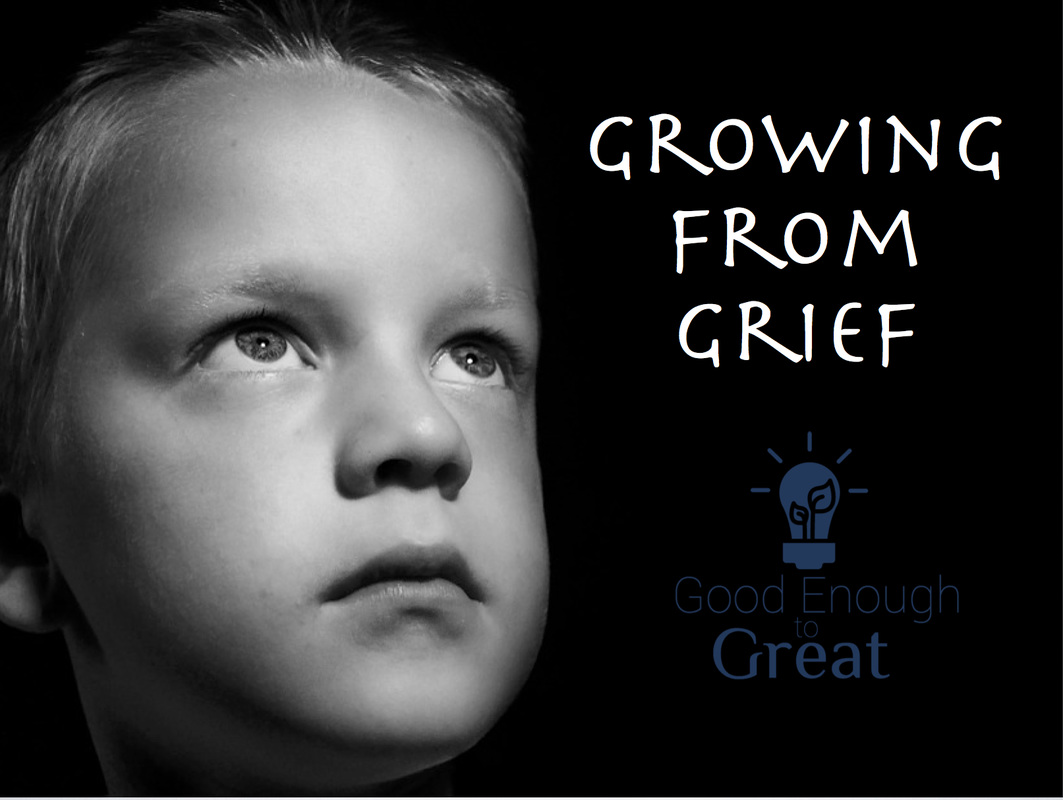|
Georgia, mother of three children under 5, describes a typical day in her house. “Say its 7 am, and my husband and I are getting ready for the day. Our son Dan, who is 3, would be lying under the kitchen table screaming because the only thing he wants for breakfast is ice-cream. Marisa, the 5 year old, would have finished her breakfast, dressed herself and would be waiting impatiently for the rest of the family to get ready. Our 14 month old baby, Carly, is teething so she would be very unsettled and grizzly. She's would probably be standing up, holding onto the coffee table and starting to take her first steps. My husband and I often look at each other and just laugh. No one told us that family life would be this crazy!” Georgia describes an incident when her daughter Marisa became upset for no apparent reason. “She burst into tears out of blue. When she was calm enough she told us how she felt like we never listened to her and that my husband and I were always busy doing other things. At first we just thought this was just normal and she was overreacting. But then when we thought about it a bit more, we realized it was true. Between work, and our family, we just seemed to go from one thing to another. I could imagine how we would come across preoccupied and disinterested to her”. Despite the time pressures that confront families today, research on the trends in parental time invested in children since the 1960s in industrialized countries show that parents appear to be devoting more time to children than they did 40 years ago. Despite these trends, research on children’s reports of feeling limited emotional connection to their parents, and the rising trend of mental health concerns in children, paints a different picture. One explanation to these seemingly contradictory findings is the increase of ‘parental presenteeism’ – parents who are physically present with kids, but lacking the capacity to attend and focus completely on their interactions with their children, without being preoccupied with other thoughts or worries. “As parents we feel pushed and pulled in many directions. So it’s pretty hard to find time and space to think, be calm, or even just find time for some quiet”. Georgia describes why she found the Parental Presence strategy useful. “My husband and I, we simply don’t have time to be practicing meditation everyday. Parental Presence was good because it just took a few minutes, we could do it anywhere, at anytime. It was quick and it helped us be more mindful and enjoy our kids”.
Parent Presence consists of three parts:
Many things can get in the way of parents feeling mentally present with their children. Time pressures, work and busy life styles are obstacles to this state of mind. “I used to be one of those people who thought relaxation and deep breathing was just hippy mambo jumbo”. Georgia describes the benefits of the strategy with a useful metaphor. “I suppose now I think of it like being on a aeroplane in an emergency – as a adult, I’ve got to put my oxygen mask on first to then be able to help my child get hers on. Parental Presence is like me putting my oxygen mask on first for my children. It’s a few minutes for myself that helps everyone in the family feel happier”. “I just couldn’t believe it was true. I couldn’t imagine Liam saying or doing things like that. I thought they were lying, or at least exaggerating what happened’. Stephanie, mother of Liam, 8 years, talks about first hearing about her son bullying another child at school. “It wasn’t till I saw Liam behaving like this at a birthday party that I realised something was wrong. I was in shock when I saw him yelling and being disrespectful to the other children and adults” Stephanie describes feeling disappointed and guilty about Liam’s behaviour. “My husband and I worked hard to raise him with good morals and values. To see him become like this, it felt like we had failed” To help Liam, Stephanie and her husband decided to become stricter with him at home. “We used a lot of consequences and discipline, but it only made things worse. He was becoming disrespectful to us. We didn’t know what else to do with him. ” 1 in 10 children will exhibit behavioural problems by the age of 18. Research has consistently found that behavioural development in children is strongly influenced by the nature of the child-parent relationship. In particular, research has found that parents who are effective at using positive communication strategies (and not punishment and limit-setting alone) have children who are well-adjusted socially, emotionally and academically. So how can parents help? While poor behaviour can be hard for parents to manage, such behaviour present parents with a unique opportunity to positively reinforce good morals and values in their children. Value affirmation is a strategy for parents to help their children with skills in acting in prosocial ways. Value affirmation consists of three parts:
Stephanie has used value affirmation with success with Liam. “At first we thought that Liam would grow out of it. That all boys go through this phase. But as parents, we can’t simply wish these problems away for our kids. As a parent, I wanted to take charge of the man my son was going to become. We can’t leave these things to chance – children need our help to become adults with good values, beliefs and morals. I would recommend the value affirmation strategy for every parent”. “Jennifer was always a happy and well-behaved girl. But we also knew she was her harshest critic”. Lena, mother of Jennifer, age 15, talks about her daughter’s struggles with low self-esteem. “We never paid much attention to her being like this – we used to think ‘that’s just Jenny.” Lena describes Jennifer as becoming withdrawn and depressed on entering high school. “We blamed ourselves for Jennifer’s low self-esteem. But then we learnt about ‘FOMO’ and realised it wasn’t that simple.”
Lena describes Jennifer’s FOMO - fear of missing out - that contributed to her feeling this way. “With all this technology, teens live in an age of little privacy and extreme scrutiny. All her friends were publicising how cool, fun & successful they were, or at least they made it appear that way. It made Jennifer feel really insecure.” Research has found FOMO to be leading to depression and anxiety in teens. “There’s more pressure on kids these days than parents realise. FOMO made Jennifer lose sight of what she liked and valued about herself.” Parents, like Lena, often try helping children with low self-esteem by reminding them of their achievements and positive qualities. “We learnt the hard way. You can’t simply lecture or convince children into feeling good about themselves. The more we pointed out to her the reasons she should be happy, the more she felt misunderstood and became distant from us” How can parents help? Children with low self-esteem are often sensitive to feelings of shame and rejection. Appreciative Inquiry help parents to encourage children in thinking about their worries in a constructive way, by helping them cope with self-criticism and disappointment. Here are three steps to using Appreciative Inquiry in daily conversations: 1. Depersonalise the problem: By helping teens describe their problems in a specific way, we begin to help them see that they are not completely to blame for these difficulties. Lena describes her experience of doing this. “By figuring out what exactly the problem was, Jennifer was slowly starting to see that even though she may not be as ‘perfect’ as her friends, she was not a failure”. 2. Spot the strengths: Thinking together about how to use personal strengths to deal with challenges is often the great way to help teen focus on what they can control in such situations. By discussing problem-solving strategies, in the lens of their strengths, parents can subtly reinforce their teen’s beliefs in their positive qualities, ease feelings of shame and build their capacity to learn and grow. 3. Redefine success: “One of the reasons she put all this pressure on herself was because we hadn’t ever had a discussion about what ‘success’ looked like for her” By helping Jennifer set realistic and achievable goals, at school and with her friendships, Lena helped her daughter gain perspective on her perceived shortcomings. “What we realised was that how you think about yourself – particularly after making mistakes - is a skill Jennifer had to learn. Like riding a bike, or learning to swim. We could let her beat herself up when she compared herself to her friends, or we could help her learn how to deal with this for the future.” Lena describes her experience of using Appreciative Inquiry. “Look, talking like this didn’t come easily to us. But with practice it became more natural. We watched Jennifer come out of her shell. She still has her bad days, but I now feel confident about knowing how to help her through it.” “It looks like they all have attention deficit problems, but they don't”. Janice, an experienced primary school teacher, and mother of three children, talks about the so-called ‘internet effect’ on children. “With so much information on the internet & social media, hyperlinked text, videos and interactivity everywhere, kids have developed short attention spans to deal with it all – scrolling up and down, getting bored quickly and moving from one thing to another”. Janice describes a disturbing trend amongst children. “We’re in this new era of information at our finger tips, and we’re beginning to see the consequences of that in schools. The most disturbing pattern in all this, is that kids simply don’t stop to think anymore. Between their daily habits of clicking, liking & sharing, there is little time for thinking or being curious about anything” Although limiting screen time is often a good strategy to minimising the impact of the technology on children, the capacity for sustained attention does not often develop on its own. “There is simply nothing more powerful than curiosity to sustain a child’s interest & motivation” Janice describes curiosity as the bedrock of effective learning. “For children to be self-reliant learners, they require adults, both educators & parents, to spark their interest & desire to know more. This doesn’t mean reaching for Google. It’s about being able to think together”
How can parents help? For many parents, prying their children away from devices can be a difficult task. Others worry that not giving kid sufficient time on screens may alienate them socially, or put them behind on their skills to use new technology. Curiosity Conversations is a strategy that gives parents a way to make the most of their time with their children when they are away from technology. Even small windows of time, on the drive back from school, or going for a walk in the park, can be opportunities to build curiosity and inquisitiveness in children. Here are some ways parents can start Curiosity Conversations with kids: 1. Encouraging kids to ask questions: Invite children to ask for explanation and examples when they don’t understand something. Let them know its okay to be confused and ask questions. 2. Supporting them to think for themselves: Instead of jumping in and giving kids all the answers, take time to help them solve problems for themselves. By ‘wondering’ together, kids learn about how to think, and not just what to think. 3. Talk about new ideas and areas of interest: “Teachers are often in the dark about all of your child’s interests. This is where parents have the advantage” Janice says that parents use their child’s interests to practice concentration and critical thinking skills. “Kids are never truly happy without some level of achievement” Janice describes the skills children need for success in the future. “In the information age, achievement will depend on the capacity of children to pay attention and their ability to think & learn. Technology is progressing at a very fast pace, and kids need both teachers, and parents, to help them not be left behind”. “To be honest, I did not know what to say to her”. Julie, mother of Kara, 7 years old, talks about supporting Kara after the death of her grandmother. “We tried a lot of different things to cheer her up and get her mind off her grandma, but none of them seemed to work for very long”.
Julie describes watching Kara’s distress as “unbearable”. “The reality was that I was grieving too. I was quite close to my mother-in-law and watching Kara upset for days on end was exhausting. I felt helpless”. 1 in every 5 children will experience the death of someone close to them by the age of 18. Children can experience grief and loss from a very young age. Despite having their own unique ways of grieving, children often require the support of a trusting adult to reaffirm their faith in the world and the future. So how can parents help? While losses can be distressing, the experience of grief in children presents parents with a unique opportunity to build emotional resilience. Emotion coaching is a strategy for parents to help their children with skills to cope with strong negative emotions. Emotion coaching consists of three parts:
Julie has used emotion coaching with success with Kara. “I was nervous about saying something that would make Kara worse, or push her to becoming depressed. With Emotion Coaching, I feel like I know what to say to her. Don’t get me wrong, its still hard watching her upset, but I know that I can help her learn how to cope with such intense feelings - like grief and sadness - in the future and into adulthood” |
|
Child Psychologist Ipswich
|
Child Psychologist Brisbane
|
Child Counselling Ipswich
|
Child Counselling Brisbane
|
Child Anxiety Counselling
|
Child Behaviour Counselling
|
Clinical Child Psychologist
|
|
Child and Adolescent
Psychology Services |
Contact
Details Address: 2 Gray Street, Ipswich 4305
Phone: 0405744851 Fax: (07) 38190088 |
Young Minds acknowledges the Australian Aboriginal and Torres Strait Islander peoples as the first inhabitants of the nation, and the traditional custodians of the lands we all enjoy. We pay our respects to ancestors and Elders past, present and emerging. We value and honour Australian Aboriginal and Torres Strait Islander peoples’ unique cultural and spiritual relationships to the land, waters and seas and their rich contribution to society. Young Minds acknowledges the traditional owners of the land upon which our health service is built, the Yuggera and Turrbal People.
© 2024 Young Minds Psychology
© 2024 Young Minds Psychology













 RSS Feed
RSS Feed
